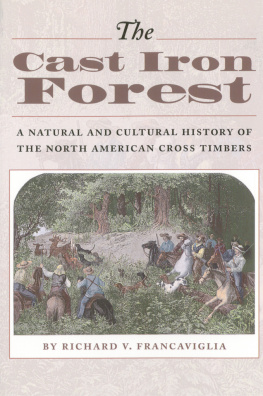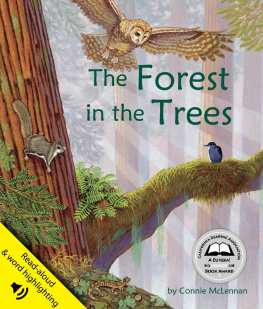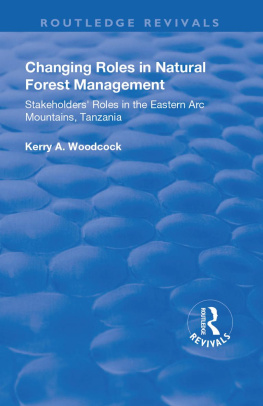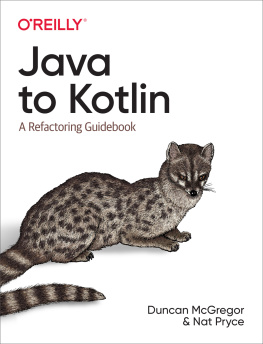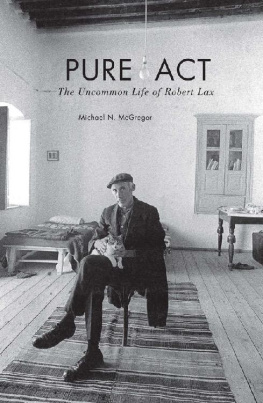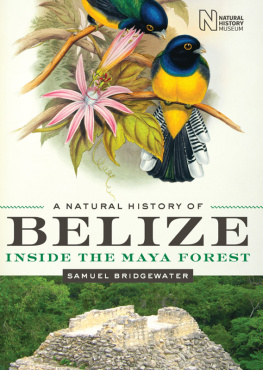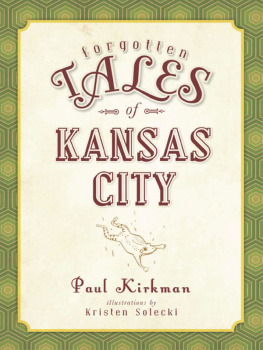University of Kansas Publications
Museum of Natural History
Volume 10, No. 3, pp. 77127, 2 pls., 7 figs. in text, 4 tables

December 31, 1956

The Forest Habitat of the University of
Kansas Natural History Reservation
BY
HENRY S. FITCH AND RONALD L. MCGREGOR
University of Kansas
Lawrence
1956
University of Kansas Publications, Museum of Natural History
Editors: E. Raymond Hall, Chairman, A. Byron Leonard,
Robert W. Wilson
Volume 10, No. 3, pp. 77127, 2 pls., 7 figs. in text, 4 tables
Published December 31, 1956
University of Kansas
Lawrence, Kansas
PRINTED BY
FERD VOILAND, JR., STATE PRINTER
TOPEKA, KANSAS
1956

263855
The Forest Habitat of the University of
Kansas Natural History Reservation
By
Henry S. Fitch and Ronald L. McGregor
Introduction
In northeastern Kansas, before it was disturbed by the arrival of white settlers in the eighteen fifties, tall grass prairies and deciduous forests were both represented. These two contrasting types of vegetation overlapped widely in an interdigitating pattern which was determined by distribution of moisture, soil types, slope exposure and various biotic factors.
The early explorers who saw this region, and the settlers who came later, left only incomplete descriptions, which were usually vague as to the locality and the species of plants represented. As a result, there is but little concrete information as to the precise boundaries between the forests and grasslands, and opinions differ among ecologists. No representative sample of either type remains.
It may be assumed that the plant communities existing one hundred years ago and earlier were far more stable than those of the present that have resulted from man's disruptive activities. This stability was only relative, however. Within the last few thousand years since the final withdrawal of the Wisconsinan ice sheet, fairly rapid and continual change must have occurred, as a result of changing climate, the sudden extinction of various large, dominant mammals, and finally the impact of successive aboriginal cultures.
The land north of the Kansas River had been a reserve for the Delaware Indians. This land was thrown open to settlement as a result of two separate purchases from the tribe, in 1860 and 1866. The alluvial bottomlands were fertile and soon were under cultivation.
History
Because the prairies and forests were soon destroyed or altered by cow, ax, plow and fire, knowledge of the region's ecology under the conditions that prevailed in the early nineteenth century and the centuries before must be gained largely from circumstantial evidence. Although there were no ecologists among the first settlers in Kansas, occasional glimpses of the region's ecology are afforded by the writings of early residents who mentioned native plant and animal life from time to time. However, such mention was usually casual and fragmentary.
A brief early description of forest in northeastern Kansas, which is casual and incomplete, and perhaps misleading, since it differs from later accounts, was included in Major W. S. Long's report of the exploring expedition that passed through country now included in Johnson, Douglas, Shawnee, Wabaunsee, Riley, Pottawatomie, Jackson, Jefferson and Leavenworth counties in 1819. "The catalogue of the forest trees in this region is not very copious. The cottonwood and the plane tree [sycamore] everywhere form conspicuous features of the forests. With these are intermixed the tall and graceful acacia, the honey locust, and the bonduc, or coffee-tree, and carya [hickory] and fraxinus [ash] " (Taft, 1950:442).
A description of the country in northern Douglas County and adjacent Leavenworth County, while it was still in virtually undisturbed condition, was written by Mr. George S. Parks (1854). Travelling up the Kansas River from the Missouri state line he described the vegetation and physiography with respect to specific landmarks that can be easily located at the present time. His descriptions of the areas he saw that were nearest the Reservation, are quoted below, in part.
[Travelling west from near the mouth of Stranger Creek 10 miles ESE Reservation.] " bluff with open woods and high rolling prairie in background. On the south side of the river grass and scattering timber forming a green lawn back with high prairie. In this neighborhood the shore is rocky. We passed a bald bluff on the north, with a rich bottom on the south side, and a high open lawn in the rear. A little farther on the elevated prairies strike the river, giving a charming variety of scenerywhile on the north are extended bottoms of rich timbered lands.
"In this vicinity we saw many Indians along the banks; we also passed a grape thicket, in the bottom, spread over several thousand acreswhile just above, on our right, rose a rocky bluff, covered with open woods. A little above this Sugar Creek empties into the Kansas, from the right; and a little farther up, there is a low bluffa short distance beyond, there being another fine grape thicket, and rich walnut bottom. On the right side of the river rises a beautiful undulating eminence open woods and a fine prairie about a mile back.
"On the left, a short distance above, the Wakarusa flows ina considerable streamwith good timber for some way back.
"On both sides of the river, above the Wakarusa, there are excellent bottom lands; farther up on the south bank, the high prairie comes down to the water's edge away as far as the eye could reach in a southwest direction, the prairies were high and rolling, like the waves of old oceansouthward, beautiful groves dot the prairie and the dark line of timber that stretches along the Wakarusa Valleywith the great Prairie-mound fixed there as a landmark of perpetual beautythe meandering river with its dark skirting forests of timber on the north Proceeding north, high rich bottoms extend for many miles and we saw vast thickets of grape-vines, pea-vines etc. and paw-paws. The timber was principally oak, walnut, ash, hickory, mulberry, hackberry, linden, cottonwood and coffee-bean.
[Between the Reservation and the mouth of the Delaware River, 10 miles west.] "A few miles below the mouth of the Grasshopper [Delaware] on the north the prairie undulates gradually back from the river as far as the eye can reach between the Grasshopper and Mud Creek there is a prairie bottom where pioneers are making claims."
In 1855 Mrs. Sara T. D. Robinson, wife of Dr. Charles Robinson who was the first governor of Kansas, described in her diary the environs of Lawrence (1899). In part, the areas described by her overlap those described by Parks, and both writers impart similar impressions. Mrs. Robinson's writing was concerned chiefly with the social and political affairs of the territory and the occasional comments on the "scenery" in her voluble accounts must be regarded as impressions rather than purposeful and accurate descriptions, as certain inconsistencies are apparent. Excerpts from several of her more significant descriptive passages are quoted below. [Between Lawrence and Kansas City, April 17, 1855.] " prairie stretching in all directions, noble forests marking the line of the rivers and creeks, tall oaks and walnuts grouped in admirable arrangement there were deep ravines skirted with graceful trees, while the water in their pebbly beds is limpid and clear." [North of Wakarusa Crossing.] " stumps in every direction in the woods " [At Lawrence, April 18, 1855.] "The town reaches to the river, whose further shore is skirted with a line of beautiful timber, while beyond all rise the Delaware lands, which in the distance have all the appearance of cultivated fields and orchards. A line of timber between us and Blue Mound marks the course of the Wakarusa, while beyond the eye rests upon a country diversified in surface, sloping hills, finely rolling prairies, and timbered creeks to the northwest there is the most delightful mingling together of hill, valley, prairie, woodland, and river fine grove about a mile west of town, one of Nature's grand old forests."




 December 31, 1956
December 31, 1956 


